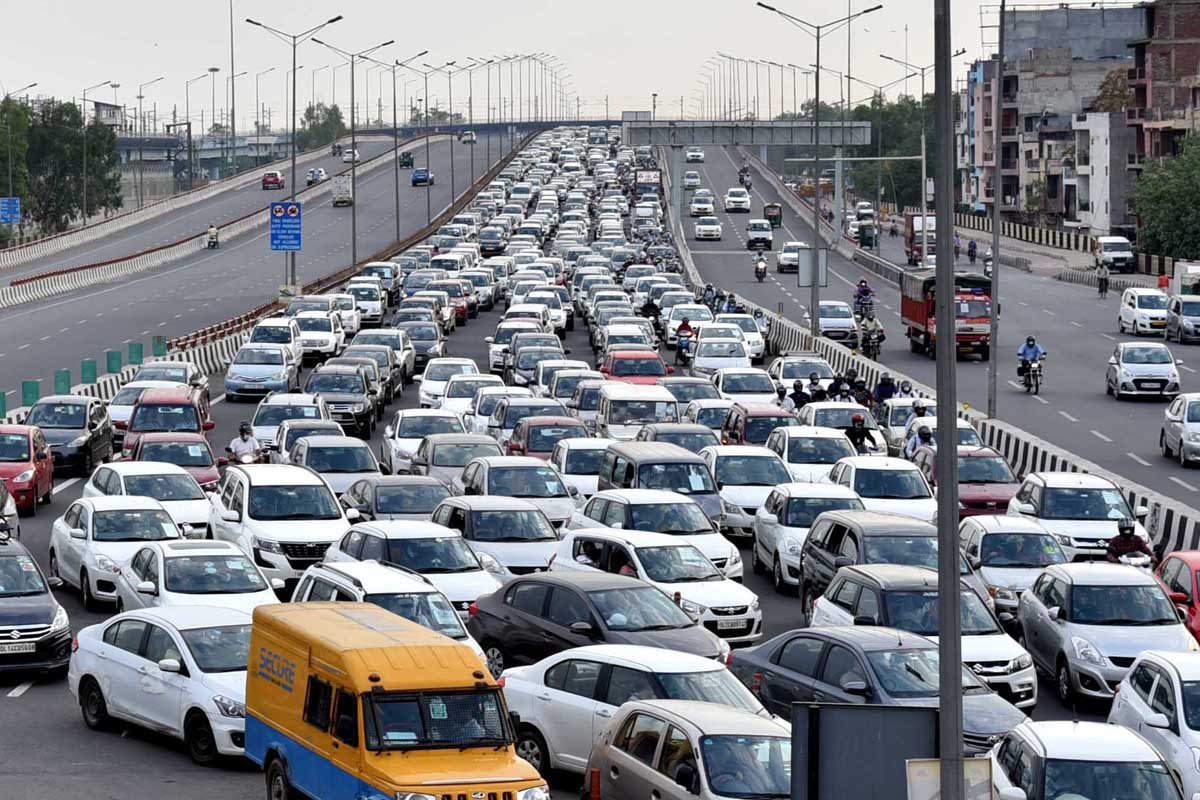Dumping yard in Noida set on fire by unknown persons
Deputy Director, Noida Authority, Anand Mohan Singh said that the horticulture dumping yard fire was set by some unknown persons.
Although Delhi roads must be the heaviest administered part of the country, after the enactment of the new Motor Vehicles Act, there is no traffic cop in sight to help anyone.

Photo: SNS
Driving from Mayur Vihar and Noida to South Delhi across the DND Yamuna bridge brings tears to the eyes of thousands of people every day. The morning and evening office hours are worse than the rest of the day. Halfway across the journey, the bridge turns chock-a-block.
There is no knowing what is happening at the other end. It is common knowledge, otherwise, the Ashram Chowk is being redone with an underpass. You have no other way but to inch your movement forward in a calibrated manner.
The scene is similar to what was experienced on the ITO and Nizamuddin Bridges a couple of decades ago. The DND bridge was built to give relief to traffic suffering unimaginable discomfort in driving on the two bridges. Today, the DND is pleading innocence if it is not helping people now.
Advertisement
The misery is not of its making. It is a different matter, the DND itself is in a bad shape now, its surface uprooted on several stretches. This forces people to drive in a zig-zag manner. It is now just a road connecting the two banks of the Yamuna. As one approaches its end towards Ashram, one can see the Noida loop bringing its share of massive traffic on Ring Road.
The vehicle drivers have no way but to keep cool. The pain has to be suffered patiently. One can now see the long iron rods embedded in pillars installed deep in the dug up earth. This will tell anyone that it will be months or more before the project sees its completion. For the cabs running for app services, the ordeal is even worse.
They have to listen to their customers losing patience. Everybody wants to know if there is a way to slip out of the confusion. The cabs’ earnings have also fallen. They are burning much costlier fuel. The number of passengers has fallen because not everyone can avoid sickness in a locked car for long. To reach Kailash Colony or beyond, the cabs take the Garhi village-East of Kailash route.
This must have destroyed the peace of these localities. An air pollution terminal at this point will definitely find the venue the most polluted place in the metropolis, with a massive gathering of vehicles of all sorts amidst dust and dug up trenches.
Thousands of vehicles are moving below residential quarters, with many buildings having shops on their ground floors. The vehicles which move towards Ring Road are no better. The first flyover is full of vehicles and one has to drag up one’s heated vehicle showly. On return, many take the bumpy turn towards Serai Kale Khan for Rajghat or Nizamuddin Bridge.
Although Delhi roads must be the heaviest administered part of the country, after the enactment of the new Motor Vehicles Act, there is no traffic cop in sight to help anyone. In fact, none can even make an attempt to come in the way of the traffic to offer guidance.
Everybody has to be on his or her own. The festival days will make the scenario even worse, although there can be doubt if there is scope for more confusion at the place. There was a time when civic bodies in the Capital informed citizens in advance about power or water supply cuts. Traffic snarls were historically witnessed in Delhi on the days when Republic Day parade rehearsals took place.
But this lasted only a few days. The Metro took care to lay perfect alternative routes wherever its construction work was taking place. There was no extension of deadlines at random. Delhi can have a “programme” implementation authority to ensure this for all projects.
(Contributed by: Deepak Razdan and Amit Banerjee)
Advertisement